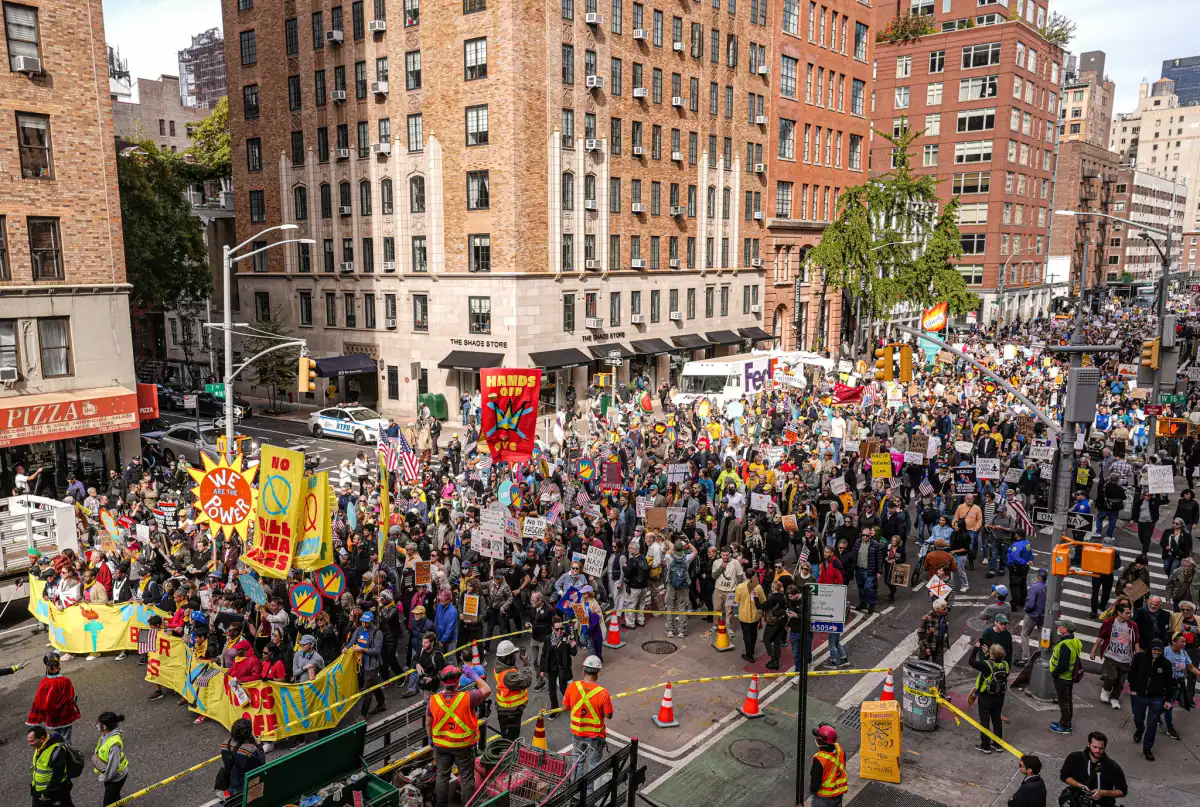Copyright AM New York

Peaceful protests matter more than most people think. Researchers have found that nearly every nonviolent movement with active participation from at least 3.5 % of the population has succeeded in bringing down an authoritarian regime or radically changing government policy. In fact, the evidence is so strong that the study refers to the concept as the “3.5% Rule.” The 3.5% rule was developed in 2013 by Erica Chenoweth of Harvard University, assisted with foundational research by Maria Stephan and Christopher Shay. Their results were published in their book, “Why Civil Resistance Works: The Strategic Logic of Nonviolent Conflict.” They studied 323 worldwide occurrences of violent and nonviolent campaigns to overthrow national leaders or create independent territory between 1900 and 2006. They cautioned that the figure is a descriptive statistic and not a hard and fast law, emphasizing the importance of other factors such as strategic leadership, organization, and momentum. The researchers concluded that every movement with at least 3.5% popular participation succeeded in its goals. They also concluded that nonviolent movements are twice as likely to succeed as violent campaigns because four times as many people tend to reject violence and will more readily join a nonviolent movement which they support. Mass mobilization of peaceful protests in the U.S. is moving increasingly toward 3.5%. More than 7 million people participated in the “No Kings” demonstrations on October 18 across over 2,700 events in the U.S. That number exceeded the 5 million people in the No Kings protests last June, which exceeded the Hands-Off protests in April which drew 3 million people. Notably, the 4 million people who took to the streets in the 2017 Women’s March at the time was the largest single-day protest in American history. According to the study, if the number of protesters against the Trump administration reaches a peak of 3.5 % of the population, or 12 million Americans, it is almost certain that the protests will be successful in bringing significant changes in governing or policy. The researchers also found that 3.5% participation demonstrates with high confidence a much deeper support for the movement than the number of people who actually take to the streets. They found that across diverse groups including economic, business, cultural, and media sectors, there may arise from massive public protests a sense of inevitability which can translate into defections by groups and individuals who were not politically active or may have supported the government but decided to shift their allegiance when they saw such a massive and nonviolent mobilization by a united coalition of diverse interest groups and individuals. Indeed, the study found that mass protests can cause defections even from law enforcement agencies and military forces, and from members of the political party in power. To be sure, the strategy of an authoritarian regime typically is to divide the population and make people afraid of defiance. But as the researchers found, this effort is diminished when 3.5% of the population engages in other forms of protest that may affect the economy such as strikes, boycotts, sit-ins, walkouts, or shutdowns. It is plausible that even though the current protests in the U.S. are far from 12 million participants, it appears that the protests may have unsettled the current administration. It is noteworthy that President Donald Trump and his supporters have tried to demonize the October No Kings protests by suggesting that the protesters were anti-American and to belittle the size of the event. Trump labeled the protest a “hate America” rally, called the protests a “joke,” described the event as “very small, very ineffective,” and characterized the millions of ordinary Americans who took part as “whacked out” and “not representative of the people of our country.” The effort by Trump’s allies to characterize the protests as terrorists, Hamas sympathizers, and criminals was easily debunked by abundant videos of the protests and stories from ordinary Americans about who they were and why they were participating. And Trump further disparaged the No Kings event by posting an AI generated video of himself wearing a crown in a fighter jet dumping excrement on the protesters. It’s also noteworthy that the protests are occurring at a time when Trump’s approval rating is plummeting. Most polls taken in October show Trump’s approval rating between 37% and 41%, while 58% disapprove. There are significant declines in his popularity among independents, younger voters, and Hispanics. Only 18% of independents support Trump’s handling of the economy, and support for his immigration policies is at the lowest point of his second term. Whether the anti-Trump movement reaches a peak of 12 million people is uncertain but clearly it is effective in motivating people. And there are significant differences between protests in the U.S. and other countries where protests succeeded, e.g., Egypt, Philippines, Serbia, Madagascar, Albania, and Georgia. The U.S. is far more diverse geographically and demographically, Trump effectively controls every branch of the American government, and Trump is willing and able to use the military and intelligence forces to crush protests. The 3.5% rule has never been tested in the U.S. Whether this is the moment in American history when a popular uprising of 12 million or more Americans may make a difference remains to be seen.



